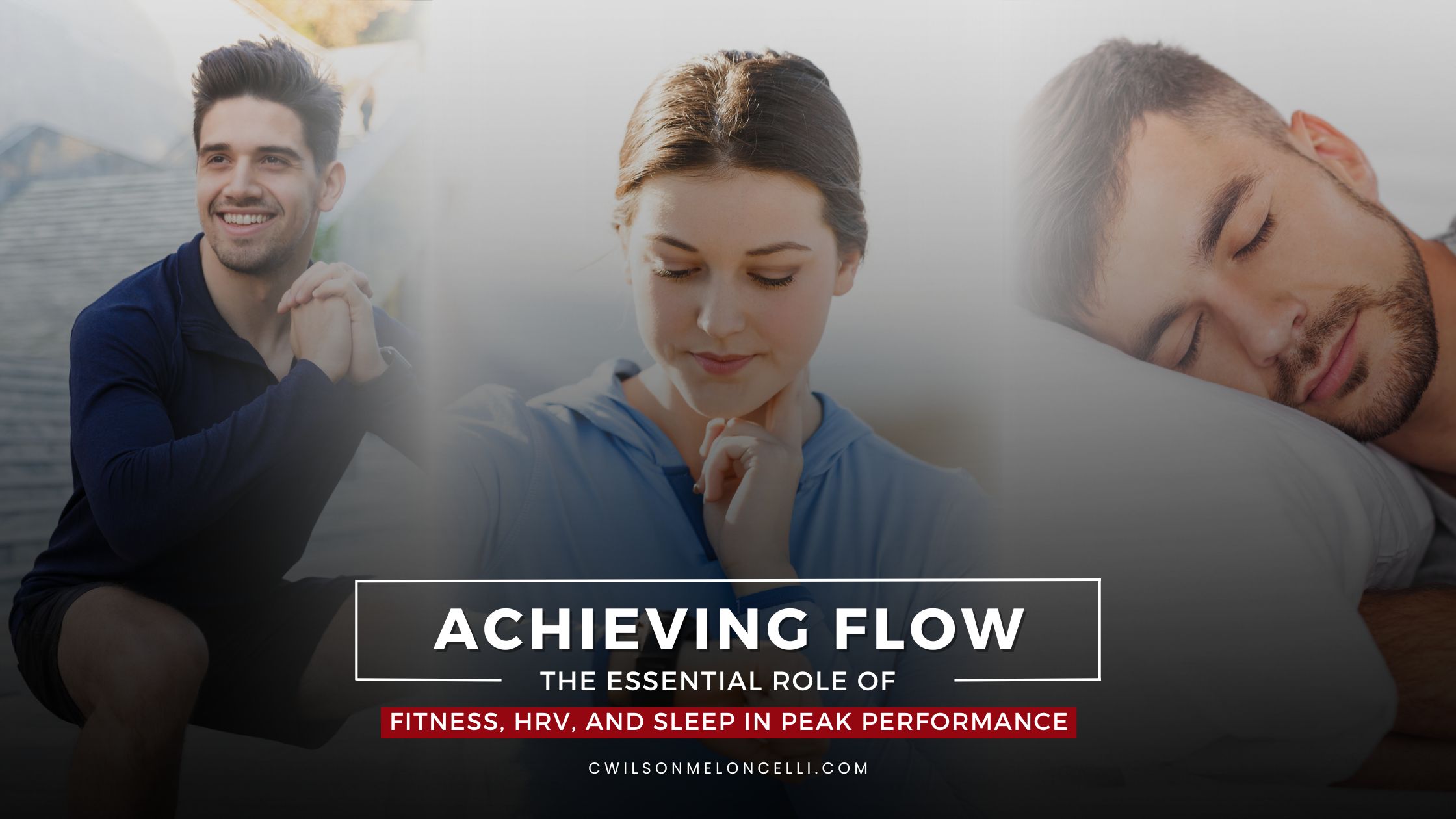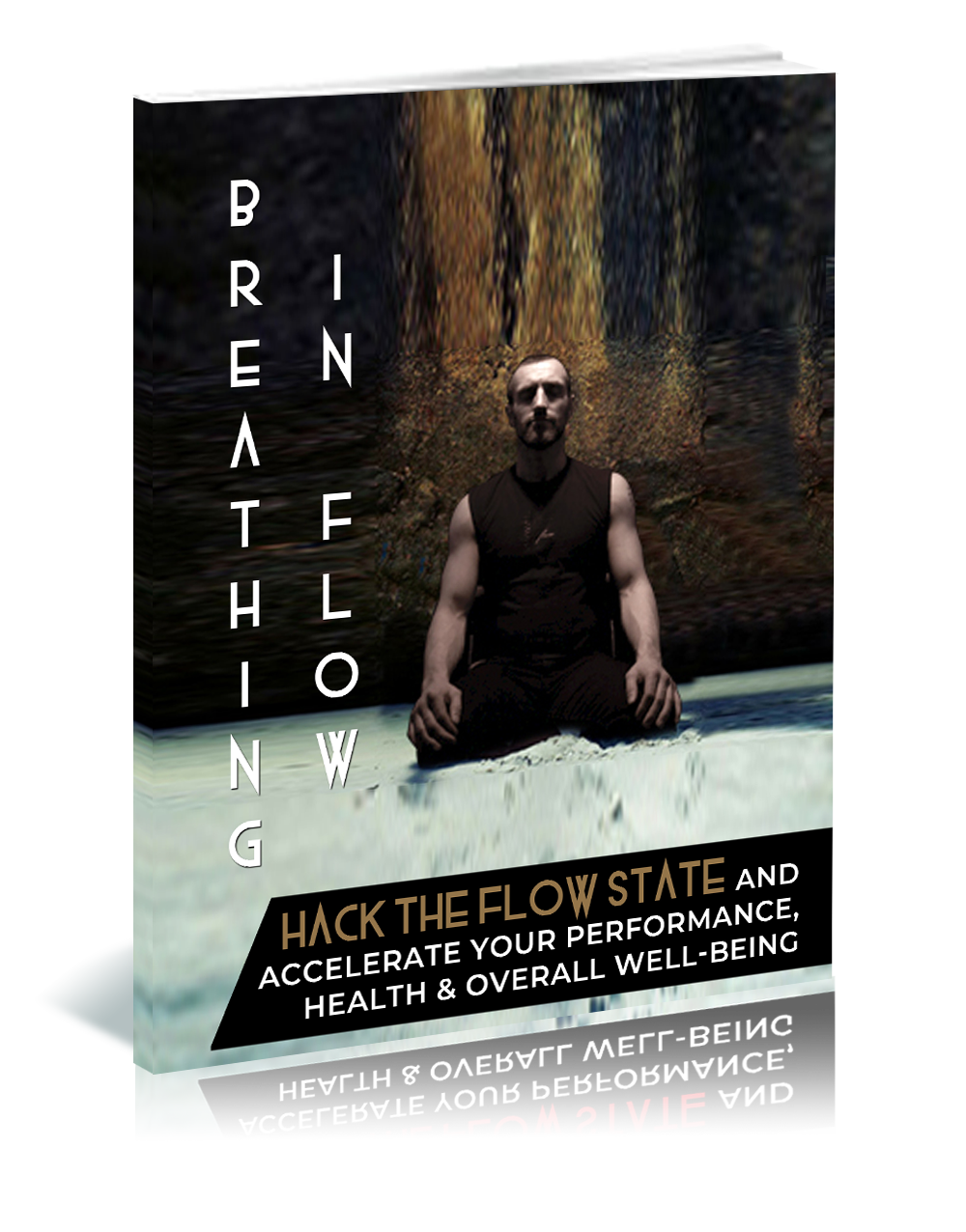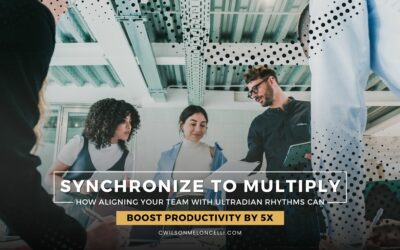
In the pursuit of peak performance, achieving a flow state—often described as being "in the zone"—is a coveted experience. This mental state of full immersion, heightened focus, and effortless productivity is not just the domain of elite athletes or artists; it’s accessible to anyone who understands how to align their physical and mental health. Central to this alignment are key factors like fitness, heart rate variability (HRV), nasal breathing, and sleep. This article explores how these elements can significantly impact your ability to access the productivity boost of the flow state and examines the science that supports these connections.
The Science of Flow
Flow, a concept popularized by psychologist Mihaly Csikszentmihalyi, occurs when a person is fully engaged in an activity, with a sense of energized focus, full involvement, and enjoyment in the process. During flow, individuals often report losing track of time and experiencing an intrinsic reward from the activity itself. Achieving this state requires a delicate balance of challenge and skill, along with optimal physical and mental conditions.
The Role of Physical Fitness in Flow: A Deeper Dive
Physical fitness is not just about maintaining a healthy body; it also plays a critical role in optimizing brain function and mental health, which are essential for achieving and sustaining a flow state. Here's a more detailed exploration of how physical fitness influences the flow state:
Cognitive Enhancements through Physical Fitness
Memory and Learning:
Regular physical exercise has been shown to improve various aspects of cognitive function, including memory and learning capacity. Exercise stimulates the production of Brain-Derived Neurotrophic Factor (BDNF), a protein that supports the growth, differentiation, and maintenance of neurons in the brain. BDNF is crucial for neuroplasticity, the brain's ability to adapt and form new neural connections. Enhanced neuroplasticity improves learning and memory, which can help individuals respond more effectively to challenges—an essential aspect of maintaining flow.
Attention Span and Focus:
Exercise also positively impacts attention and focus, both of which are critical for achieving flow. Physical activity increases the release of neurotransmitters like norepinephrine and dopamine, which enhance attention and concentration. By improving these cognitive functions, regular exercise can make it easier to sustain the deep focus required for flow.
Executive Function and Decision-Making:
Physical fitness has been linked to better executive function, which includes skills such as problem-solving, planning, and decision-making. These are key components in navigating the complex tasks that often trigger flow. Regular exercise strengthens the prefrontal cortex, the part of the brain responsible for executive functions, thereby facilitating the mental agility needed to enter and stay in a flow state.
Neurotransmitter Regulation and Mood Enhancement
Dopamine, Norepinephrine, and Serotonin:
Physical exercise helps regulate the levels of neurotransmitters such as dopamine, norepinephrine, and serotonin. Dopamine is often referred to as the "reward chemical" because it is associated with pleasure and motivation. Its release during exercise creates a sense of accomplishment and well-being, which can be a catalyst for entering flow.
Norepinephrine enhances alertness and arousal, making you more receptive to engaging deeply in a task. Serotonin, often associated with mood regulation, helps reduce anxiety and depression, creating a mental state conducive to flow. Together, these neurotransmitters foster an optimal mental state characterized by calm focus, positive motivation, and readiness to engage deeply with a challenge.
Endorphins and Stress Reduction:
Exercise is also known for triggering the release of endorphins, the body's natural painkillers and mood elevators. Endorphins help reduce the perception of stress and anxiety, which can otherwise be barriers to achieving flow. By promoting a more relaxed yet focused mental state, endorphins make it easier to immerse oneself in an activity, increasing the likelihood of entering flow.
Heart Rate Variability (HRV) and Flow
Heart rate variability (HRV) is another critical indicator of readiness for flow. HRV measures the variation in time between each heartbeat and is a marker of the autonomic nervous system’s balance. A higher HRV indicates a healthy balance between the sympathetic (fight or flight) and parasympathetic (rest and digest) nervous systems, reflecting a state of readiness to adapt to stressors, including those required to enter and sustain flow.
Research has shown that individuals with higher HRV are better able to maintain focus and recover from stress, both of which are necessary for sustaining flow . Practices like controlled breathing, meditation, and regular physical activity can improve HRV, thus enhancing one’s capacity to achieve flow.
Nasal Breathing: Optimizing Oxygenation and Focus
Breathing, particularly nasal breathing, is a powerful yet often overlooked factor in achieving flow. Nasal breathing optimizes oxygen exchange and maintains higher levels of carbon dioxide in the blood, which is essential for oxygen delivery to tissues, including the brain. This improved oxygenation supports cognitive functions, enabling sustained focus and mental clarity, which are essential for flow.
Nasal breathing also activates the parasympathetic nervous system, promoting relaxation and reducing anxiety, which can help in transitioning into a flow state. Studies have shown that consistent nasal breathing can enhance HRV, further supporting a balanced autonomic nervous system .
The Critical Role of Sleep
Sleep is the foundation upon which fitness, HRV, and breathing techniques build. Adequate sleep is essential for cognitive function, emotional regulation, and physical recovery, all of which are crucial for achieving and maintaining flow. During sleep, the brain consolidates memories, clears metabolic waste, and resets neurotransmitter levels, creating the optimal mental conditions for flow.
Chronic sleep deprivation, on the other hand, impairs cognitive functions like attention, decision-making, and problem-solving, making it difficult to achieve flow. Moreover, poor sleep negatively impacts HRV, reducing the body's ability to handle stress and maintain focus .
Practical Applications for Enhancing Flow
To leverage the benefits of fitness, HRV, nasal breathing, and sleep for accessing flow, consider incorporating the following practices into your daily routine:
- Regular Exercise: Aim for at least 30 minutes of moderate-intensity exercise most days of the week to boost cognitive function and neurotransmitter balance. Incorporate at least three sessions per week of high-intensity activities such as sprints, kettlebells, or high-intensity interval training (HIIT). These intense bouts of exercise are particularly effective at enhancing brain plasticity and promoting the release of key neurotransmitters that support flow.
- Monitor HRV: Use wearable technology to track HRV and understand how stress and recovery affect your autonomic balance. Practices like meditation, yoga, and deep breathing can help improve HRV, thus enhancing your ability to enter and sustain flow.
- Prioritize Nasal Breathing and Sleep: Optimize your sleep quality by ensuring you get 5 - 6 cycles of sleep (7.5 -9 hours) each night, and consider using mouth tape during sleep to encourage nasal breathing. Nasal breathing during sleep can enhance oxygenation and activate the parasympathetic nervous system, promoting deeper rest and better recovery. This combination supports both cognitive function and emotional regulation, which are crucial for maintaining flow.


Achieving the flow state is not a matter of chance but the result of deliberate actions that align your physical and mental health. By focusing on fitness, monitoring HRV, practicing nasal breathing, and prioritizing sleep, you can create the optimal conditions for entering and sustaining flow. These practices not only enhance your productivity but also contribute to long-term well-being, enabling you to perform at your best, both mentally and physically.
To learn more about personalizing your flow state journey watch this free details tutorial on the flow state
References
- Walker, M. P. (2017). *Why We Sleep: Unlocking the Power of Sleep and Dreams*. Scribner.
- Nestor, J. (2020). *Breath: The New Science of a Lost Art*. Riverhead Books.
- Shaffer, F., & Ginsberg, J. P. (2017). An Overview of Heart Rate Variability Metrics and Norms. *Frontiers in Public Health*, 5, 258.
- Garcia, R. G., et al. (2020). Breathing through the nose enhances relaxation via the parasympathetic nervous system: An autonomic perspective. *Journal of Neurophysiology*, 124(1), 243-252.
- Laborde, S., Mosley, E., & Thayer, J. F. (2017). Heart Rate Variability and Cardiac Vagal Tone in Psychophysiological Research – Recommendations for Experiment Planning, Data Analysis, and Data Reporting. *Frontiers in Psychology*, 8, 213.
- Ratey, J. J., & Hagerman, E. (2010). *Spark: The Revolutionary New Science of Exercise and the Brain*. Little, Brown and Company.









